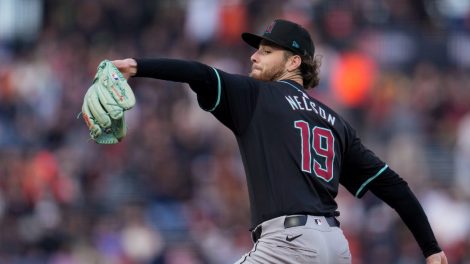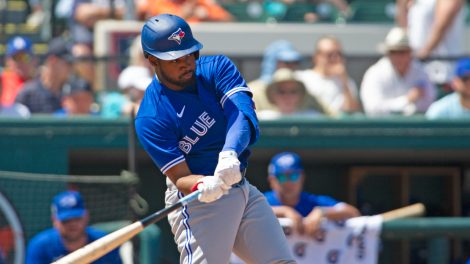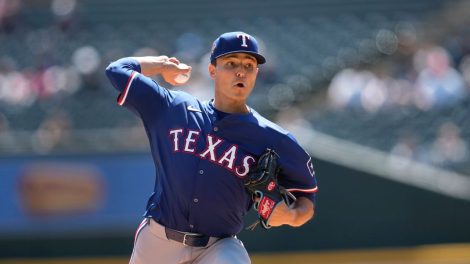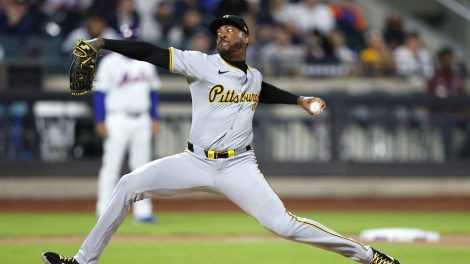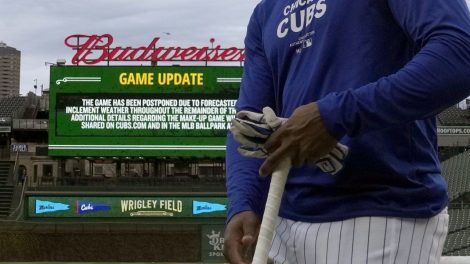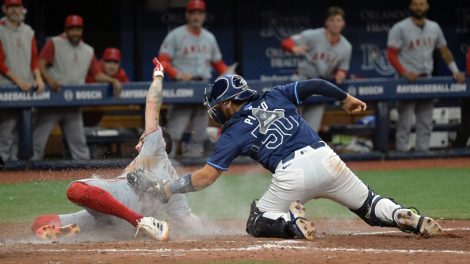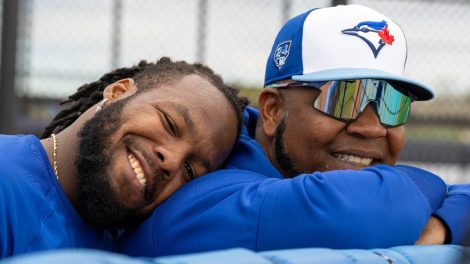Ross Stripling and his nine-months pregnant wife, Shelby, knew the weather was coming. Everyone in Texas did, as a series of severe winter storms worked their way from the Pacific Northwest across the Southern United States two weeks ago, producing record low temperatures and blanketing the state with snow. The Striplings were prepared for that part. What they didn’t anticipate was much of the state’s power grid failing, which left their Houston home dark and frigid, the indoor temperature dipping to zero degrees Celsius.
Then the water went. Treatment plants stopped operating and distribution systems failed, creating a water shortage exacerbated by concerned residents dripping their faucets in order to avoid pipe bursts. When Stripling drove Shelby to her sister’s apartment complex — which still had intermittent power — to warm up for a couple hours, the Toronto Blue Jays right-hander brought as many containers as he could.
“I had a bucket, and a cooler, and some gallon jugs,” he says. “And I’m out there filling them up with water from the apartment complex pool. Just so we could fill and flush our toilet.”
The only solace in it all was that the Striplings had a Wednesday morning appointment for Shelby to be induced. But not even the hospital had water. It was running on generators and trying to conserve power. So, the appointment was delayed until Wednesday evening. Which became Thursday morning; then Thursday afternoon.
“The whole time we’re saying, ‘Look, we’ve just got to survive a couple more hours and then we can go to the hospital where everything will be fine. And that just kept getting delayed. It was such a shot to the gut every time,” Stripling says. “I’m trying to do anything I could to make the situation better. I’m out catching water that was falling off our house through the gutters. There’s only so much you can do.”
Finally, Thursday night, as the Striplings crossed 60 hours without power and water — 48 consecutive hours initially, a 12-hour window in which the power came back, then 12 more without anything — the hospital called to say they had a room. And Friday morning at around 9 a.m., Shelby delivered seven-pounds, nine-ounces Jaxon Ridge Stripling. Everyone’s healthy, happy, doing well. The plan is for Shelby and Jaxon to join dad at spring training in Florida before long.
Right, spring training. Having your first child amidst a pandemic and the worst storm in decades is one thing — doing it all while dad’s trying to prepare for an MLB season is another. Stripling had been increasing training volume and building up his arm strength for a month and a half, throwing a series of bullpens in the weeks prior to the storm and Jaxon’s due date. He’d planned out his schedule around the delivery — the storm, not so much. Pitchers can get by with a seven-day deviation from their strength and conditioning routines if necessary. But taking that much time off throwing could set you back weeks.
So, when Stripling went to the hospital, he brought his TAP Baseball Training Sock with him. Working with the four feet of space he had available between Shelby’s bed and the couch where he was sleeping in the cramped hospital room, Stripling threw fastballs as hard as he could into that big, black oven mitt, recreating something close to his throwing program. He brought resistance bands, too, so he could continue his arm care, and did push-ups and core work on the hospital floor to maintain his conditioning.
When he threw a bullpen in Houston the Monday after Shelby was discharged from the hospital, and another in Dunedin on Friday, everything felt the way it should. He’s technically still behind the rest of the arms in camp; fellow veterans Hyun-jin Ryu and Robbie Ray were throwing two-inning live bullpens last week, while Stripling likely won’t get to one of his own until Wednesday or Thursday this week. But there’s zero concern about Stripling’s availability for opening day and, all things concerned, he’s in as good of a spot as anyone could’ve expected.
Which is good, because there’s much for Stripling to work on in the month between now and opening day. After establishing himself as a dependable MLB swingman over the first four seasons of his career, pitching to a 3.51 ERA and 3.49 xFIP over 387 innings with the Los Angeles Dodgers, Stripling’s 2020 went off the rails.

He was nearly traded before the season even began to the Los Angeles Angels as the Dodgers cleared payroll in anticipation of acquiring Mookie Betts. But the deal fell through, and Stripling remained with the Dodgers, allowing 12 home runs in his first seven outings. At the trade deadline he was traded again, this time for real to the Blue Jays, where he addressed his homer troubles but still allowed plenty of runs and hard contact.
In the end, he had a 5.84 ERA and 4.95 xFIP that both stand in stark contrast to his career norms. His strikeout rate was down five per cent from his career average; his walk rate was up two-and-a-half per cent. His groundball rate plummeted nearly nine points; his HR/FB rate soared by more than eight. None of it was good.
“My fastball command was not as good as normal. And my curveball command was certainly not as good as normal,” Stripling says. “That’s it, really. It’s execution. I just did not execute as well as I usually do for whatever reason. I’m not blaming COVID. I’m not blaming getting traded or anything like that. It was just a weird year.”
Take a look under the hood, and Striping’s stuff looks the same as it ever has. Velocity, spin rates, horizontal and vertical movement — it’s all relatively consistent year over year. If anything, Stripling’s four-seam fastball was actually a better-looking weapon on paper early on in 2020, as he had it sitting around 92-m.p.h. through his first several starts, up from 90.6 in 2019.
A Driveline instructor the Dodgers brought in for their July summer camp recommended Stripling rotate his fastball grip 90 degrees, which produced immediate increases in spin rate and velocity on the Rapsodo units tracking Stripling’s bullpens. And who wouldn’t want that? Stripling loved what the data was telling him, so he carried the pitch confidently into early-season games.
Which is where it got crushed. Something about the new grip sabotaged Stripling’s command. And although he was still able to find the inside or outside part of the plate, he was leaving fastballs thigh-high where, even with a couple more miles-per-hour behind the pitch, it was easily punishable by major-league hitting. Of the 12 home runs Stripling allowed prior to the trade, 11 came off fastballs.
Here’s the pitch location of every home run Stripling allowed in 2020, several of them middle-middle heaters:
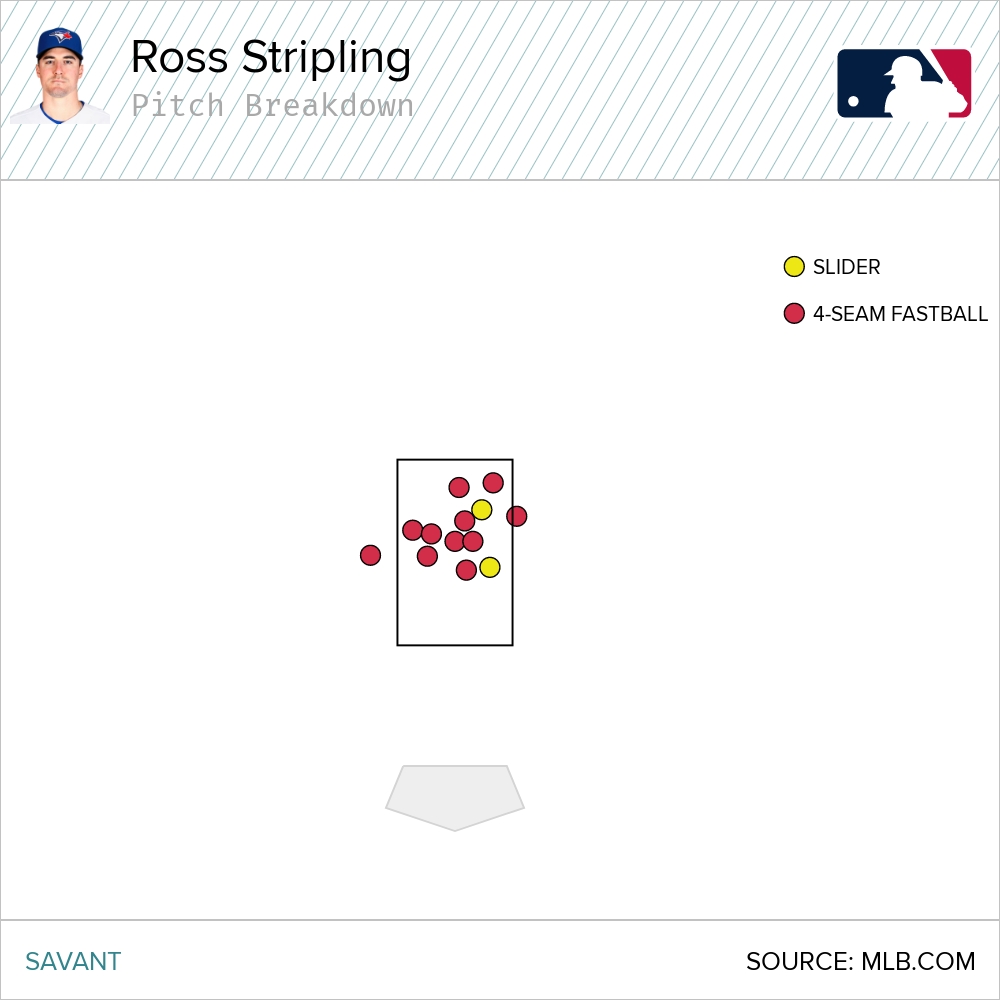
“I’ve thrown the same fastball for 30 years. And now all of a sudden, I’m changing it up and I couldn’t execute the new one as well,” Stripling says. “It took me getting traded to say, ‘Screw that, I’m going back to my fastball that I’ve used forever.’ It might be two miles per hour slower, but it’s going to stay in the yard.”
That’s exactly what happened with the Blue Jays, as Stripling reverted to his original grip, addressed his fastball command, and subsequently allowed only one homer in five outings. But that still left the curveball issue, which isn’t an insignificant one as that’s Stripling’s best pitch. After producing a whiff more than a third of the time hitters went after it over the first four seasons of his career, Stripling’s curveball swing-and-miss rate plunged to 7.5 per cent in 2020, a result of leaving too many of them up over the plate where hitters could get to them.
To wit, on the left is where Stripling was locating his curveball from 2016 through 2019; on the right is where he was locating it in 2020:
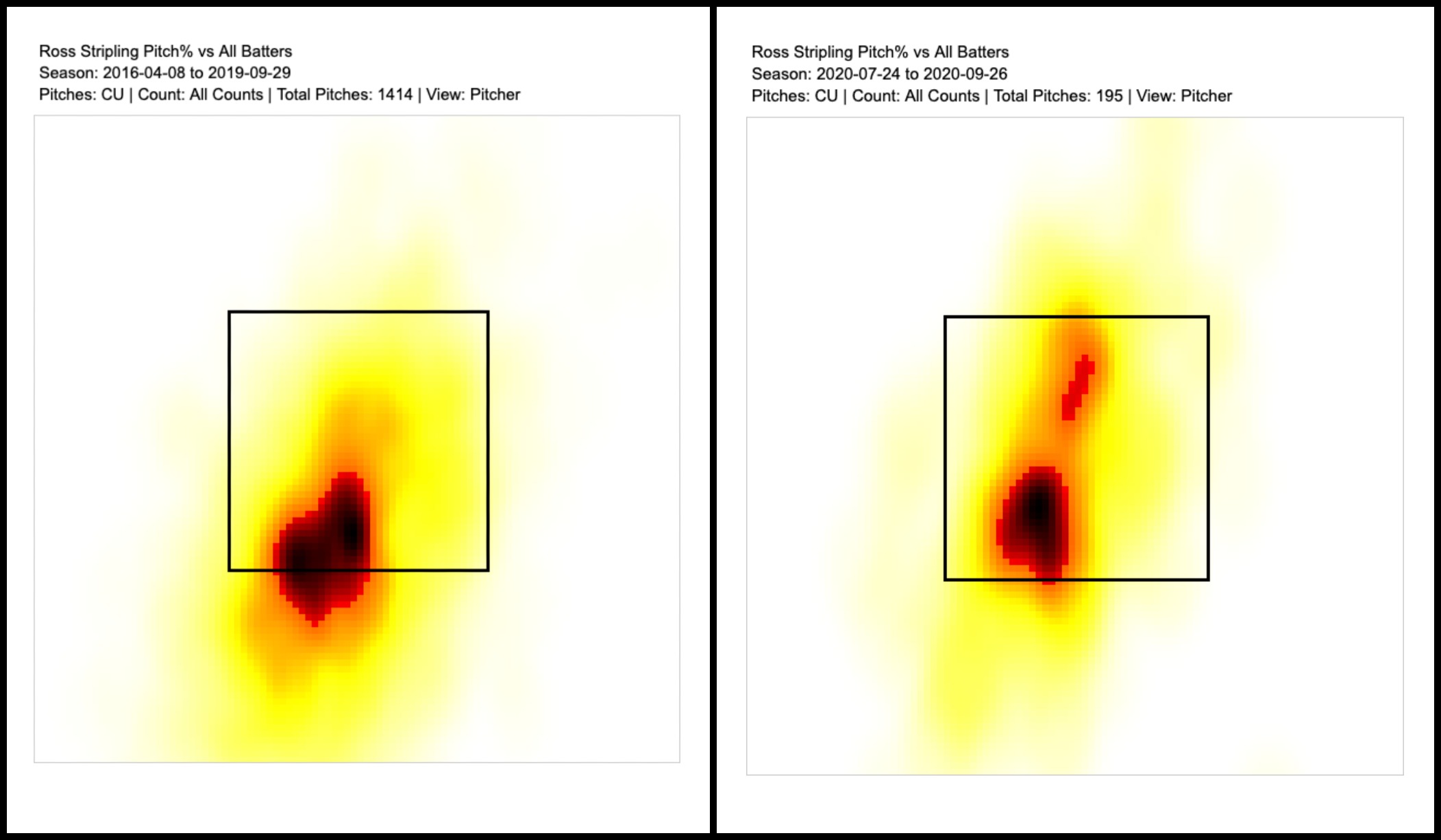
“Project one this off-season has definitely been getting the curveball zoned in to where I can throw it for a strike in my sleep and I can throw it short when I need to. When I have my curveball, my outings are usually going to go well,” Stripling says. “My curveball’s huge. It has 20 inches of break. It’s a tough thing to command. And if I can’t strike my curveball and make hitters respect it, then they can sit on that fastball. And it’s 89-91 — I’m not throwing 97. It’s much easier to get to that fastball. So, those two go hand in hand.”
Here, from an early 2019 start vs. the Milwaukee Brewers, is what he means. Behind 2-1 to Christian Yelich, Stripling dots a fastball down-and-away that the defending NL MVP can’t do anything with:
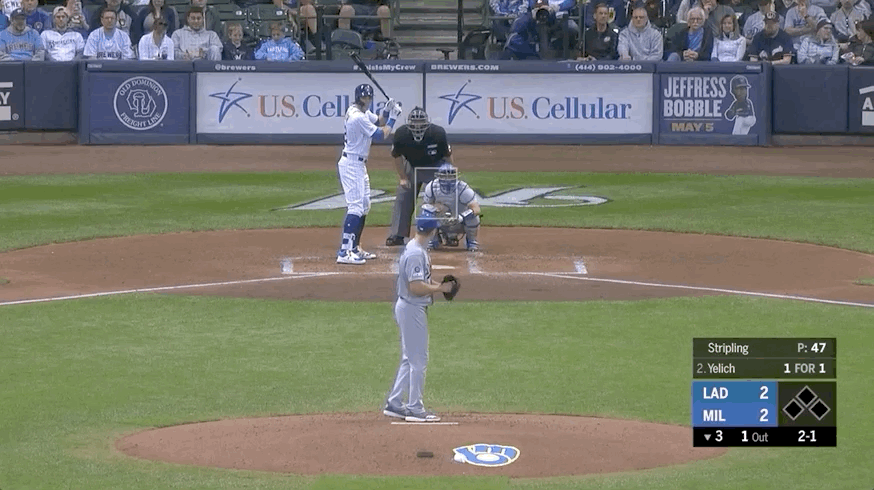
Then he comes back with an absurd curveball that starts on the outside like the fastball did but dives down towards Yelich’s back foot, earning the swinging strikeout:

Here’s another sequence from a start against the Chicago Cubs a week later, when Stripling gets ahead of Wilson Contreras with an elevated fastball:

This time, instead of dropping the curveball that follows a pitch later out of the zone, Stripling locates it on the plate in the same lane as the fastball for a called third strike:

Sequences like those are the ideal for Stripling — throwing fastballs to all quadrants of the zone and tunnelling curveballs off of those heaters, while mixing in sliders to right-handed hitters and changeups to left-handers to keep them off balance. He’d like to use his changeup more often to right-handers one day, which is a wrinkle he’s been working to develop since last spring when he tweaked his grip on the pitch to make its spin more difficult for hitters to pick up. But Stripling has a base of curveball command to rediscover before he can start worrying about adding layers like those.
He has a rotation job to compete for, too, coming into camp as one of several candidates to either make starts, pitch bulk relief outings, or do both for a deep club expected to run a fluid, versatile pitching staff designed to produce a whole greater than the sum of its parts. Coming from the Dodgers, one of MLB’s deepest organizations, it’s nothing new.
Stripling’s heard the same message from his coaches each of the last five springs: ‘We’ll stretch you out as a starter and see what we need you to do come opening day.’ Some years, like 2017 when the Dodgers rotation was stacked, that meant getting bulk outs in middle innings while making a spot start here and there. Some seasons, like 2018 when he was named a National League all-star, that meant making 21 starts.
Either way, he’s not particularly bothered. It’s a big reason why the Blue Jays traded two prospects to acquire Stripling last July. In 2020, the club began utilizing depth starters such as Thomas Hatch, Anthony Kay, and Julian Merryweather as bulk relievers, entering the game after a starting pitcher had taken two trips through the order to face anywhere from seven to 12 batters and bridge to the back end of the bullpen. If clubs aren’t going to allow starters to face a lineup a third time, someone has to get those middle-inning outs.
And Stripling’s been doing that his entire career. It may not be a leverage role as we commonly understand it — but those outs are no less important at a time when games can be won or lost.
“I think there’s a ton of value in that role. You’re facing the lineup a full time, you’re trying to get nine outs — that’s a big deal,” Stripling says. “There’s a lot of leverage spots throughout nine innings. You’ve got to get the best guys out, no matter when it is in the game. And I always took a lot of pride in that role.”
It’s a demanding role, too. On a multi-city road trip, you might be asked to get six outs one night, recover on an airplane flying across the continent, and get seven outs less than 48 hours later. A couple nights after that, when a starter takes a comebacker off the knee and has to leave the game, you’re getting thrown into the bottom of the first inning with runners on before you’ve even had two sips of your bullpen coffee.
“I’ve had to do that countless times in my career,” Stripling says. “And I actually enjoy it. It’s fun. There’s not a lot of guys that like to do it — which I think is part of why I like to do it. And if that’s what the Blue Jays ask me to do for part of the season, the whole season, whatever, you’ll never hear me complain about it. But I do think that my arsenal fits as a starter, so that’s the job that I’m going for.”
We’ll see how it all shakes out. Odds are Stripling ends up with a season that looks a lot like his first four in the majors — some starts, some bulk relief, plenty of usage in leverage spots. He’d just like his numbers to look similar to those years, too. He’d like 2020 to be a blip — just a strange year that produced strange results. And he’d like his wild week in Texas earlier this month to be the end of the commotion for his 2021.
“When you start to struggle, you want to do well, right? You want to get things back to normal. And then you start listening to everyone, you start trying new things, you’re trying to be perfect. Now, all of a sudden, I’m 1-0 to everyone because I’m trying to hit a fly from 60-feet, six-inches down and away,” he says. “It just snowballs. So, I had to get that out of my mind — fresh start, get back to what I’ve done for five years. And know that I can compete at the big-league level and get guys out. My stuff plays. I just need to execute it like I always have.”
[relatedlinks]


